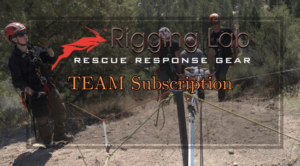Tower access technique with semi-static rope.
WARNINGS
Read the technical notice before viewing the following techniques.
It is important to fully understand the information provided in the technical notice before using this complementary information
Mastering these techniques requires training.
Consult a professional before attempting to perform these techniques on your own.
To access a tower, it is ideal to have a belay system already anchored at the top, allowing one to climb up with a suitable device (e.g. a mobile fall arrester). Another option is to find a practical access route that can be protected with energy absorbing lanyards.
Otherwise, access from below can be done by a work team using the following procedure:
1. The first team member ascends using climbing techniques.
2. The remaining team members ascend, backed-up by an ASAP.
The first team member ascends using rock climbing techniques.The remaining team members ascend, backed-up by an ASAP.
With a semi-static rope, pay attention to the rope path, which should be as straight as possible. Rubbing at intermediate anchor points can limit the rope’s capacity to absorb the energy of a fall. Lacking another solution, place pulleys at the most outlying points.
The first team member ascends using rock climbing techniques.Rubbing at intermediate anchor points can limit the rope’s capacity to absorb the energy of a fall.
Beware of ground fall risk. For the first few meters of the climb, the intermediate anchor points must be sufficiently close together to prevent the climber from hitting the ground in case of a fall.
There are two possibilities for the belay technique, with advantages and disadvantages to consider depending on the situation:
Rock climbing belay technique with the I’D on a fixed point:
Even a semi-static rope helps cushion a fall, provided there is a long length of rope between the belayer and the climber. To increase the length of rope involved, place a directional point with a pulley at the base of the tower and position the belay point at a distance.
Advantages of belaying from a fixed point:
The belayer is free to move around, for example if he needs to call for rescue.
The rope length reduces the impact force, even at the start of the climb.
Disadvantages of belaying from a fixed point:
No belayer displacement when stopping a fall; the impact force can be greater than when belaying from the harness.
Note:
Installing an energy absorber between the I’D and the anchor does not guarantee that the impact force on the climber will be limited to 6 kN.
If your risk analysis prompts you to put an energy absorber into the system, place it at the climber’s tie-in point.
Rock climbing belay technique with the I’D on the harness:
During progression, a special technique is required in order to smoothly give slack.
The belayer must be vigilant and anticipate the climber’s movements.
The I’D must be held between the index finger and thumb, and angled downward, while always holding the brake side of the rope.
Lors de la progression, pour donner du mou avec assez de fluidité, une technique particulière est nécessaire. Lors de la progression, pour donner du mou avec assez de fluidité, une technique particulière est nécessaire 2.
Advantages of belaying from the harness:
- The belayer can move to respond to the climber’s movements.
- In a fall, belayer displacement can reduce the impact force on the climber.
Disadvantages of belaying from the harness:
- The belayer has limited freedom of movement, for example if he needs to call for rescue.
- If the climber falls, the belayer can be yanked around.
- The stopping distance is longer than with a fixed point; the climber is more likely to hit an obstacle while falling.
Note:
– This technique can also be used with a dynamic rope.








